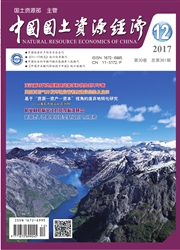

 中文摘要:
中文摘要:
传统城镇化的快速推进建立在资源能源高度消耗、土地资源占用严重、“三废”高排放的基础上,城镇化进程中的空间扩张失控、人口高度膨胀、国土空间开发格局不合理、城乡区域发展不协调等问题日益突出.生态文明战略下的新型城镇化建设要以资源环境承载力为基础,科学规划各类城市规模;推进资源节约集约利用,大力发展循环经济;细化各类环保标准,促进各类主体环保自律;按照宜居宜业标准,优化国土空间开发格局;推动城乡一体化发展,逐步缩小城乡差距.
 英文摘要:
英文摘要:
The rapid advance of conventionalurbanizationhas resulted in the high consumption of resources and energy, serious loss of landresources, and high-emission of the “three wastes”. As a result, incontrollable space expansion,high population expansion, the irrationalitieson the spatial layout of our development, and uncoordinated development between urban and rural areas and between regions in relation tourbanization are becoming increasingly evident. To achieve the new type of urbanization, we need to rely on the carrying capacity of resourcesand the environment, scientifically determine the different types of urban scale, promote the economical and intensive use of resources, anddevote major efforts to develop the circular economy. All kinds of standards of environmental protection are refined with a view to advancingthe parties to protect the environment in a self-disciplined way. In accordance with livable and enterprise-adaptability standard, we shouldoptimize the spatial layout of our development, promote urban and rural integration development, and reduce the gap between urban and ruralareas.
 同期刊论文项目
同期刊论文项目
 同项目期刊论文
同项目期刊论文
 期刊信息
期刊信息
